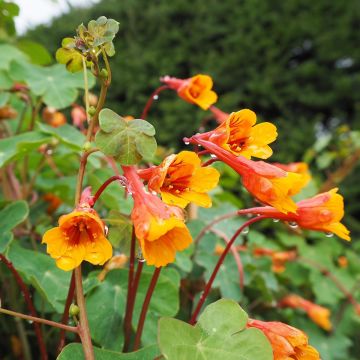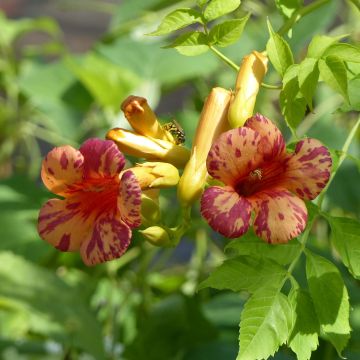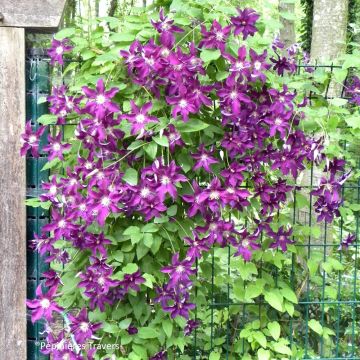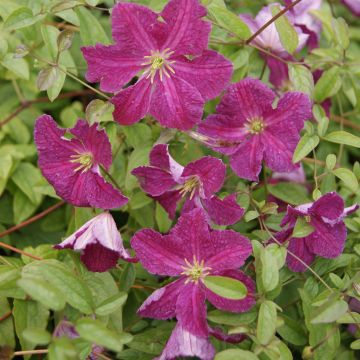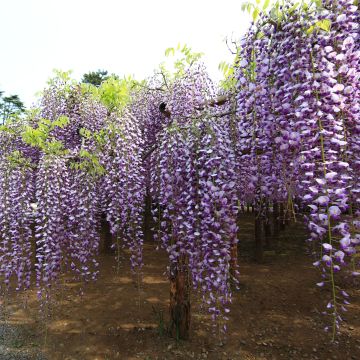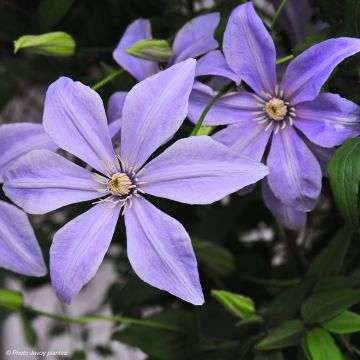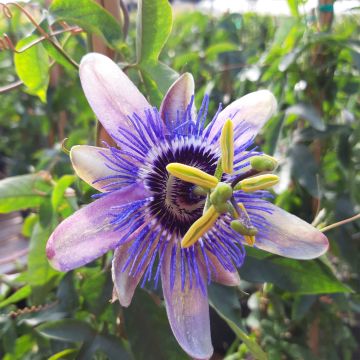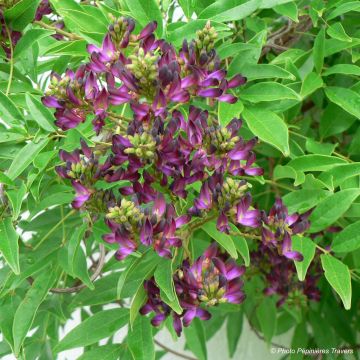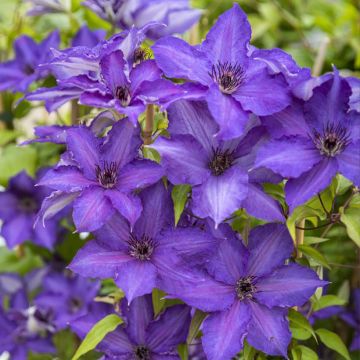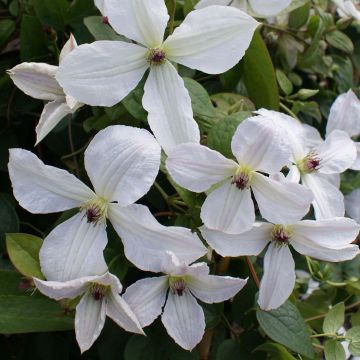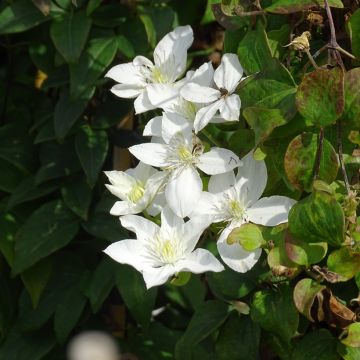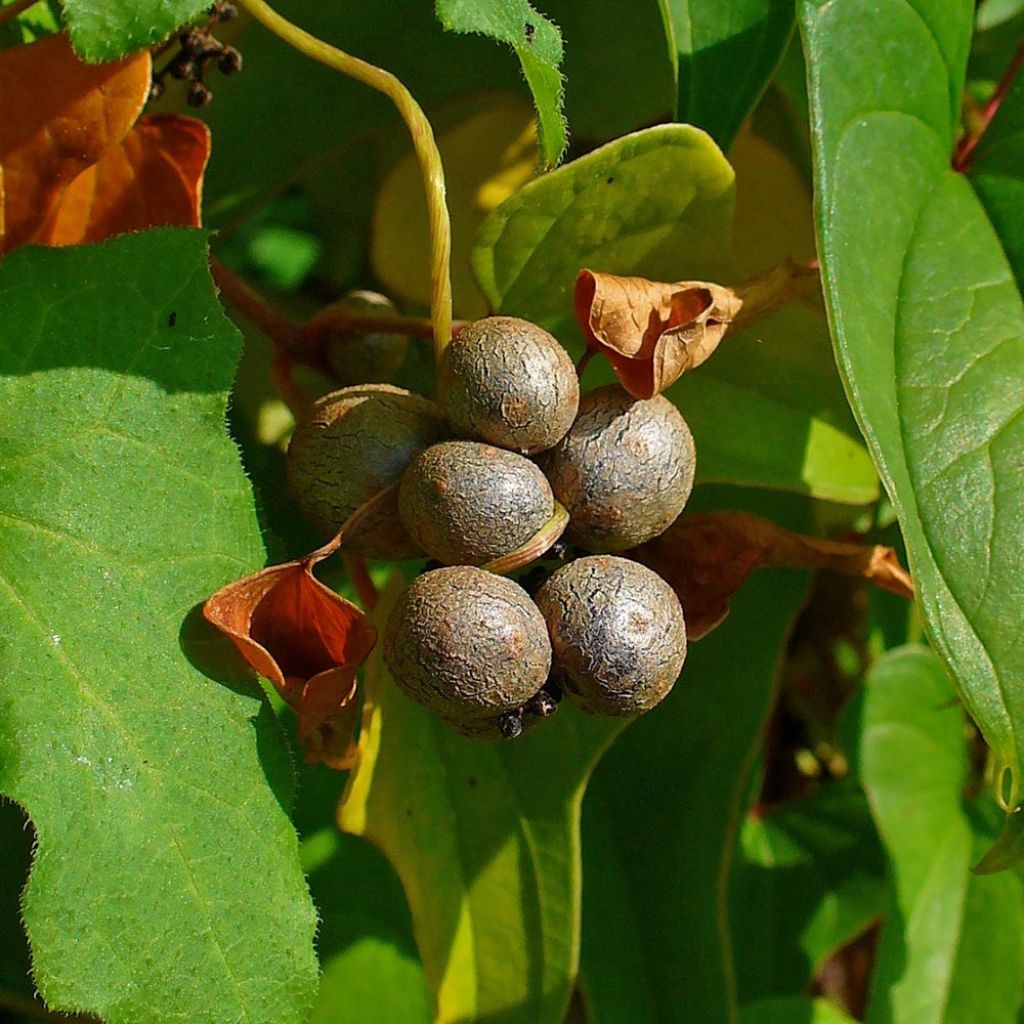

Igname de chine - Dioscorea batatas
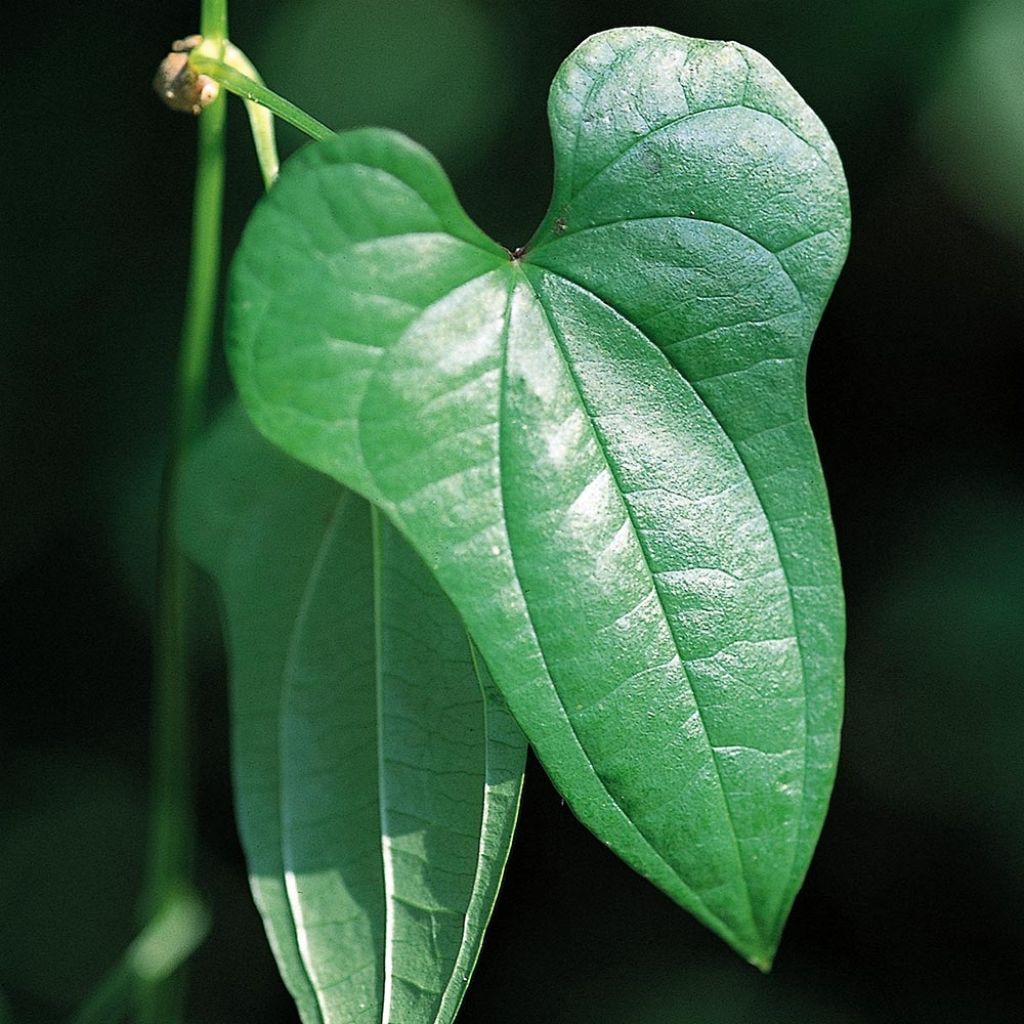

Igname de chine - Dioscorea batatas
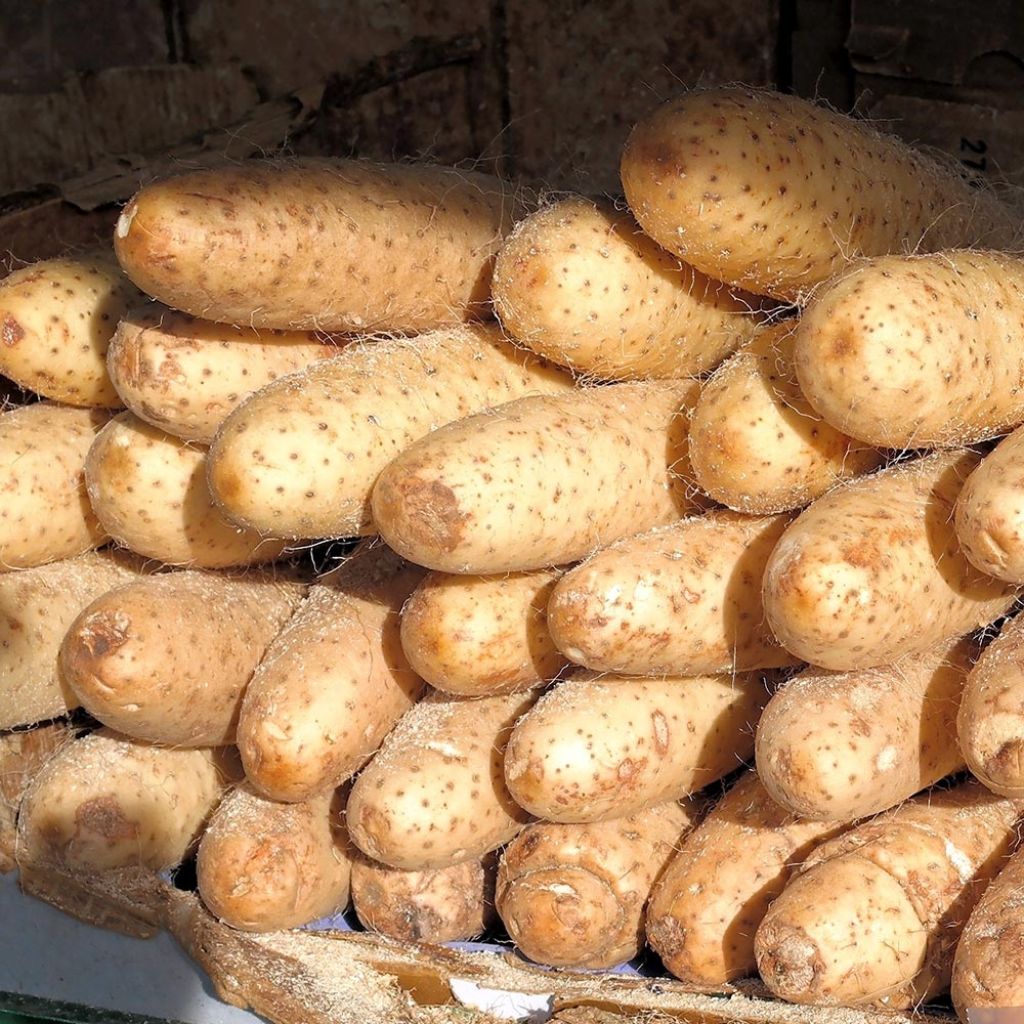

Igname de chine - Dioscorea batatas
Dioscorea batatas - Chinese yam
Dioscorea batatas
Chinese Yam, Cinnamon Vine, Chinese Potato
Planted as soon as received and somewhat neglected, it has managed to show resilience nonetheless, and not ungratefully: it produced numerous bulbils last summer (2nd year of planting). I haven't dared to dig it up yet to taste it... But the foliage itself is decorative and healthy, and harvesting the bulbils is enjoyable.
Sarah, 10/03/2023
This plant carries a 6 months recovery warranty
More information
We guarantee the quality of our plants for a full growing cycle, and will replace at our expense any plant that fails to recover under normal climatic and planting conditions.
From €5.90 for pickup delivery and €6.90 for home delivery
Express home delivery from €8.90.

Does this plant fit my garden?
Set up your Plantfit profile →
Description
The Chinese Yam, in Latin Dioscorea batatas, is one of the few representatives of this group of tropical plants that can adapt to outdoor cultivation in temperate latitudes. It is a perennial vine with a large tuberous root, which produces annual climbing stems adorned with beautiful heart-shaped leaves. Planted in good, rich, and deep soil, and in a warm location, the Chinese yam is a productive species, with giant tubers harvested from November to March, as needed, taking care to gently remove them, so as not to break them. The plant can easily be propagated by dividing the tubers or by planting the bulbils that form on the stems. It is a good plant for permaculture, and can be grown in an edible forest, for example.
Dioscorea batatas (Synonym D. polystachia) belongs to the Dioscoreaceae family and is native to Asia (China, Japan, Korea). This climbing plant is also classified as a root vegetable and is a staple in traditional Asian cuisine. Its above-ground vegetation regrows every spring and disappears in winter. The slender stems can climb up to 3 metres (10 feet) high on a trellis or around a supporting tree. Under favourable growing conditions (in a tropical climate), its tuberous roots can exceed 1 metre (3 feet) in length and weigh more than 30kg. Shaped like a club, they are covered with grey-brown skin with eyes like potatoes, and their flesh is pale yellow to almost white. In temperate areas, it is rare for them to exceed one kilogram. The tubers of the Chinese yam are rich in starch, with a sweet flavour, and can be consumed cooked or even raw. The foliage consists of entire leaves, arranged in an opposite manner on the stems, heart-shaped with a pointed tip, green and very glossy, with prominent parallel veins. The flowering, of little interest, takes the form of clusters of small pale yellow-green flowers, often sterile. Some years, they are followed by the formation of bulbils, which are also edible and easy to replant.
In terms of cooking: peel your tubers, cut them into pieces, and prepare them like potatoes, mashed, fried, chips, steamed, in salads, sautéed in a pan, gratin, in soups, or in vegetable medleys. The small tubers attached to the stems can be consumed like new potatoes. This plant is rich in vitamins B and C and minerals. The leaves and roots have recognised uses in Chinese medicine.
The Chinese yam can only be cultivated outdoors. Plant it with a sufficiently sturdy support due to the weight of the vegetation; the density of its foliage will also create a beautiful visual screen on a grid or trellis. To harvest, it will be necessary to wait 7 to 8 months after planting tuber sections or 21 to 22 months after planting bulbils. Harvest the bulbils in October and dig up the tubers from November to March.
Tips: mulch the soil in summer to maintain moisture and save on watering, and add well-decomposed compost in spring. Avoid planting other root vegetables before or after growing yams.
Report an error about the product description
Dioscorea batatas - Chinese yam in pictures
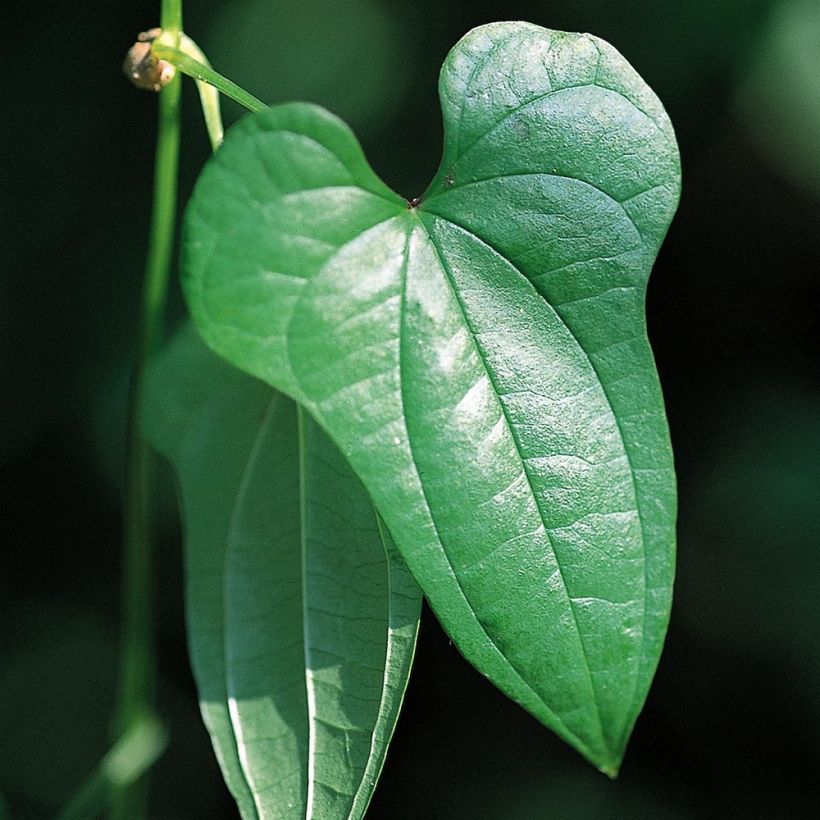

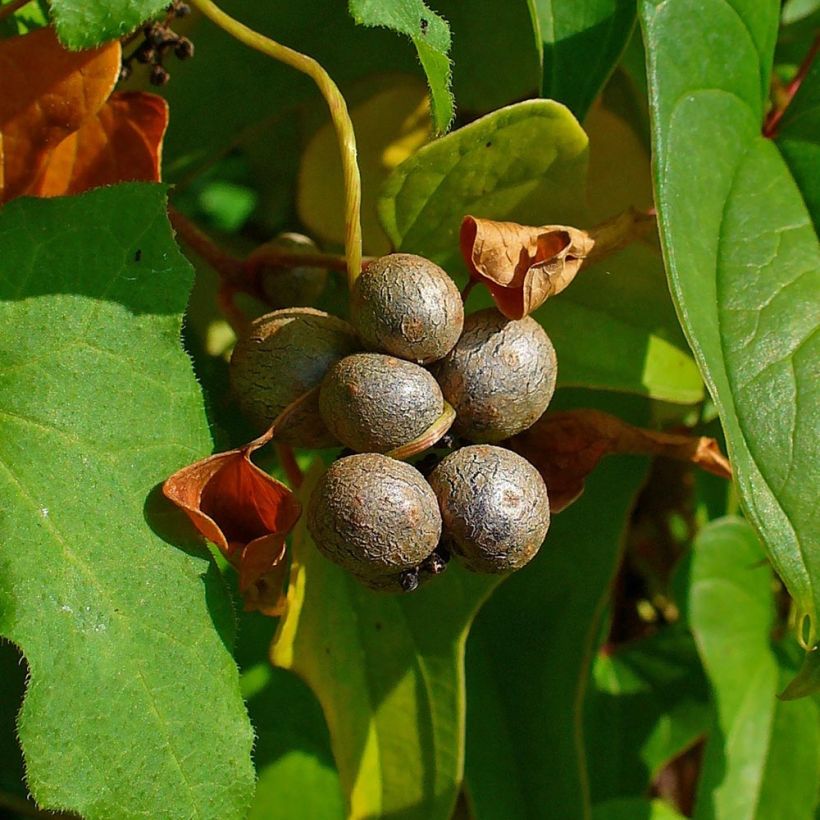

Plant habit
Flowering
Foliage
Botanical data
Dioscorea
batatas
Dioscoreaceae
Chinese Yam, Cinnamon Vine, Chinese Potato
China
Other Tuberous climbers
Planting and care
Plant Chinese yam tubers directly in the ground in spring (in May) at a depth of 10 or 12cm (4 or 5in), just like you would with potatoes. It is also possible to start their growth in March by placing them in pots and keeping them in a warm and sunny location. Plant them in mid-May when there is no longer a risk of frost, with a minimum spacing of 80cm (32in) between plants. Choose a warm and sheltered spot with loose, rich, and deep soil. Water generously. In heavy or very wet soil, Chinese yam can be grown on small mounds of 30 to 40cm (12 to 16in), which will also make harvesting easier.
Chinese yam thrives in heat and humidity, so water it during dry periods. Mulch the soil to keep it moist. It is also a voracious plant that requires soil enriched with organic matter (compost, organic fertilisers, well-decomposed manure, etc.). The young shoots may be attacked by slugs and snails in spring. Other pests may also target the plant, such as mealybugs, nematodes, and aphids (it can be helpful to combine it with nasturtiums, which will attract aphids)...
Harvest the underground tubers as the leaves turn yellow in autumn, as needed. To obtain very large tubers, it is possible to wait until the second year before digging them up. Dig at least 50cm (20in) deep and carefully remove the tubers as they are fragile.
Planting period
Intended location
Care
-
, onOrder confirmed
Reply from on Promesse de fleurs
Summer flowering climbers
Haven't found what you were looking for?
Hardiness is the lowest winter temperature a plant can endure without suffering serious damage or even dying. However, hardiness is affected by location (a sheltered area, such as a patio), protection (winter cover) and soil type (hardiness is improved by well-drained soil).

Photo Sharing Terms & Conditions
In order to encourage gardeners to interact and share their experiences, Promesse de fleurs offers various media enabling content to be uploaded onto its Site - in particular via the ‘Photo sharing’ module.
The User agrees to refrain from:
- Posting any content that is illegal, prejudicial, insulting, racist, inciteful to hatred, revisionist, contrary to public decency, that infringes on privacy or on the privacy rights of third parties, in particular the publicity rights of persons and goods, intellectual property rights, or the right to privacy.
- Submitting content on behalf of a third party;
- Impersonate the identity of a third party and/or publish any personal information about a third party;
In general, the User undertakes to refrain from any unethical behaviour.
All Content (in particular text, comments, files, images, photos, videos, creative works, etc.), which may be subject to property or intellectual property rights, image or other private rights, shall remain the property of the User, subject to the limited rights granted by the terms of the licence granted by Promesse de fleurs as stated below. Users are at liberty to publish or not to publish such Content on the Site, notably via the ‘Photo Sharing’ facility, and accept that this Content shall be made public and freely accessible, notably on the Internet.
Users further acknowledge, undertake to have ,and guarantee that they hold all necessary rights and permissions to publish such material on the Site, in particular with regard to the legislation in force pertaining to any privacy, property, intellectual property, image, or contractual rights, or rights of any other nature. By publishing such Content on the Site, Users acknowledge accepting full liability as publishers of the Content within the meaning of the law, and grant Promesse de fleurs, free of charge, an inclusive, worldwide licence for the said Content for the entire duration of its publication, including all reproduction, representation, up/downloading, displaying, performing, transmission, and storage rights.
Users also grant permission for their name to be linked to the Content and accept that this link may not always be made available.
By engaging in posting material, Users consent to their Content becoming automatically accessible on the Internet, in particular on other sites and/or blogs and/or web pages of the Promesse de fleurs site, including in particular social pages and the Promesse de fleurs catalogue.
Users may secure the removal of entrusted content free of charge by issuing a simple request via our contact form.
The flowering period indicated on our website applies to countries and regions located in USDA zone 8 (France, the United Kingdom, Ireland, the Netherlands, etc.)
It will vary according to where you live:
- In zones 9 to 10 (Italy, Spain, Greece, etc.), flowering will occur about 2 to 4 weeks earlier.
- In zones 6 to 7 (Germany, Poland, Slovenia, and lower mountainous regions), flowering will be delayed by 2 to 3 weeks.
- In zone 5 (Central Europe, Scandinavia), blooming will be delayed by 3 to 5 weeks.
In temperate climates, pruning of spring-flowering shrubs (forsythia, spireas, etc.) should be done just after flowering.
Pruning of summer-flowering shrubs (Indian Lilac, Perovskia, etc.) can be done in winter or spring.
In cold regions as well as with frost-sensitive plants, avoid pruning too early when severe frosts may still occur.
The planting period indicated on our website applies to countries and regions located in USDA zone 8 (France, United Kingdom, Ireland, Netherlands).
It will vary according to where you live:
- In Mediterranean zones (Marseille, Madrid, Milan, etc.), autumn and winter are the best planting periods.
- In continental zones (Strasbourg, Munich, Vienna, etc.), delay planting by 2 to 3 weeks in spring and bring it forward by 2 to 4 weeks in autumn.
- In mountainous regions (the Alps, Pyrenees, Carpathians, etc.), it is best to plant in late spring (May-June) or late summer (August-September).
The harvesting period indicated on our website applies to countries and regions in USDA zone 8 (France, England, Ireland, the Netherlands).
In colder areas (Scandinavia, Poland, Austria...) fruit and vegetable harvests are likely to be delayed by 3-4 weeks.
In warmer areas (Italy, Spain, Greece, etc.), harvesting will probably take place earlier, depending on weather conditions.
The sowing periods indicated on our website apply to countries and regions within USDA Zone 8 (France, UK, Ireland, Netherlands).
In colder areas (Scandinavia, Poland, Austria...), delay any outdoor sowing by 3-4 weeks, or sow under glass.
In warmer climes (Italy, Spain, Greece, etc.), bring outdoor sowing forward by a few weeks.

































